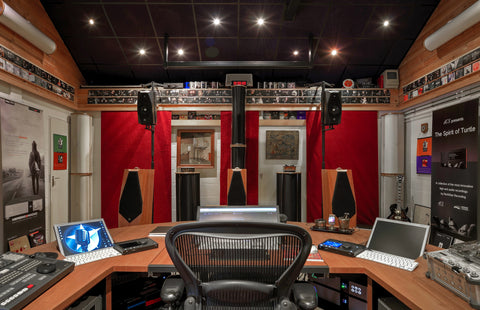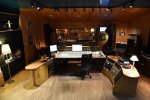I imagine being a sound engineer for a live event requires more skill because there is only one shot at recording it.Almost always for live recordings.
-
WANTED: Happy members who like to discuss audio and other topics related to our interest. Desire to learn and share knowledge of science required. There are many reviews of audio hardware and expert members to help answer your questions. Click here to have your audio equipment measured for free!
You are using an out of date browser. It may not display this or other websites correctly.
You should upgrade or use an alternative browser.
You should upgrade or use an alternative browser.
Which speakers are the Classical Music Pros using?
- Thread starter tuga
- Start date
Doing any job good requires skill. However, these days most recordings are done to multitrack and the main problem is to keep levels in spec and place microphones correctly.I imagine being a sound engineer for a live event requires more skill because there is only one shot at recording it.
bo_knows
Addicted to Fun and Learning
Thank you for sharing this picture.
An interesting and simple way to deal with the sidewall reflections by creating the angled reflector panel. I could use this. Hmmm....
Dr Toole will not be happy when he sees yet another B&W systemThank you for sharing this picture.
An interesting and simple way to deal with the sidewall reflections by creating the angled reflector panel. I could use this. Hmmm....
View attachment 166255
Yes, apart from being the two songwriters in ABBA, they have written the now classical musical ”Chess” and ” Christina from duvhemala” with symphony orchestras playing.I see. Do they record/mix/master classical music? If not they've no place in this topic.
Chess is, musically, the best ever "musical" IMHO.Yes, apart from being the two songwriters in ABBA, they have written the now classical musical ”Chess” and ” Christina from duvhemala” with symphony orchestras playing.
A classic (although never classical.)Chess is, musically, the best ever "musical" IMHO.
Longshan
Active Member
- Joined
- Feb 3, 2021
- Messages
- 230
- Likes
- 259
All musicals are mind-numbing and demented, lol.Chess is, musically, the best ever "musical" IMHO.
RIP, Sir Frank.
Of course lots of B&Ws, the producers are familiar in the studio recording room for years. Also passing down the knowledge whoever incoming producer. One thing will not see the 31 bands eq to B&Ws. Of course to other brand of studio monitors too. Even you have Genelec SAM, the engineer unliking to take the dsp fully and manually tweak the EQs. That not the end, when you get the mix, you pass it to mastering studio. Other kind of setup. Specialty engineer for classical music mastering. Another set of monitor, being EQ along the way. They have to make the mix to suit various like streaming, youtube, broadcast, CD release, Vinyl press ......etc finally to consumer like you. Ideally you should use "accurate" speaker system along the way, but in practice it is not. When you have the chance, experience with producer who really make albums.
Used to have all speakers from B&W stopped upgrading after the 800D2 and 802D2. I sold them all but never liked the 800D3 not heard the D4!
Thinking of Revel PerformaBe 3 but the white drivers are not working for us! KEF is also on the short list.
Thinking of Revel PerformaBe 3 but the white drivers are not working for us! KEF is also on the short list.
mkt
Senior Member
- Joined
- Jan 6, 2020
- Messages
- 338
- Likes
- 465
Avalon monitors at Spirit of Turtle/Northstar Recording/Challenge Classics


 spiritofturtle.com
spiritofturtle.com


The Spirits Recording- and Mastering Equipment
In the past 35 years, a dedicated and highly proprietary collection of recording-, editing- & mastering tools have been assembled. Microphone techniques and post-production workflow, using these specialized tools, have integrated seamless with artistic and technical expertise. This all leading...
beagleman
Major Contributor
I have just dipped into this thread after a long absence and I apologize in advance for not having read all entries in the thread. However, I have noted that B&W 800 series speakers are reported as showing up in control rooms, implying that they have some special quality missing in "non-classical" monitors. Sorry, but this is simply human nature at work. There are facts and there are opinions - the two frequently differ.
I cannot speak for the latest version of the 800 series, but in previous incarnations they have by measurement and by double-blind subjective testing been shown to be less-than-neutral sounding loudspeakers. They are not "bad" but they don't win double-blind listening tests. The most neutral, transparent, loudspeakers do, and this can be deduced from a comprehensive set of on- and off-axis anechoic measurements, especially if those data are presented in the spinorama format, which estimates the sounds arriving at a listener in an acoustically typical room.
B&W have done a superb job of marketing their product, and servicing customer needs, which are admirable traits. But if one is interested in hearing unadulterated, neutral, versions of the signals that were recorded, these speaker have not done it. Yet they have a following amongst some, not all, classical recording engineers. I have a theory which goes back to the analog-to-digital transition decades ago.
Long ago I had been using LPs as musical sources for listening tests in my research. I came to understand the medium extremely well, even to the point of creating test records to test the capabilities of the medium. It is sadly lacking - it is simply not possible to hear what was on the master tape when playing back an LP. It can be extremely pleasant if the music is to your liking but, objectively, the detailed sounds reaching your ears are not the sounds that were on the master tape.
At a point, through personal connections, I was able to acquire a PCM digital version of a master tape, and an analog duplicate at 15 ips. I also had the LP release of the music. I cannot recall what it was, but it was one of the "warhorse" symphonies, very popular and in a highly thought of rendering. The first thing that was clear in the simplest of listening comparisons was that the PCM version and the one-from-master tape versions were essentially identical. The LP version was very different. This is precisely as I had expected.
The monitor speakers used in the recording were B&Ws and I had anechoic chamber measurements of them. They exhibited much the same upper midrange dip in frequency response that is seen in recent 800 series monitors. In fact several of the less expensive B&W models at the time had similar characteristics, indicating that there was corporate performance target. People had thought about it and decided that flat was not ideal. Why?
In my double-blind listening tests of that period - and to this day - loudspeakers exhibiting flat, i.e. neutral, on-axis response and similarly smooth off axis behavior, were highly rated in most of the tests with most of the recorded music of the several genres that were auditioned. But, this particular recording, while being very enjoyable musically, was frequently judged to be somewhat too bright.
In the day, and now, recordings of classical orchestras were often made with microphones placed in elevated positions above the violins. These instruments radiate strong high frequencies upwards, not towards the audience in a concert hall. They are heard by the audience, but after reflection and reverberation in a physically large space - they add "air" to the illusion. The microphones were relatively close and in a position to collect more high frequency energy than is likely to be heard in the audience, certainly in the ground level seats. It turns out that loudspeakers with slightly attenuated upper-mid/lower highs sounded better. So, instead of listening to neutral monitors and adding a little EQ attenuation in the offending frequency range, they decided to listen to the flattering monitor speakers and leave the excessive highs in the recording.
In short, the non-flat loudspeakers were being used as a program equalizer, and the results would only be appreciated if customers had similarly non-flat loudspeakers. In my terms the "circle of confusion" would be eliminated, but only for recordings made using these monitors and for customers with similarly colored loudspeakers. In the real world this could not really work, because even at that time a flat axial frequency response was the normal target performance, albeit often violated in random ways. Now it is pretty much the norm, for those companies with the engineering competence to achieve it.
A feature of the 800 series not commonly appreciated is that its behavior is predictable from visual inspection. The midrange speaker is quite large, meaning that it is becoming significantly directional before it crosses over to the tweeter. When the tweeter comes on, it has wide dispersion which is enhanced by its unbaffled mounting, which aggravates the problem. Today, it is becoming common to see tweeters on baffles with waveguides to improve the directivity match with the midrange speaker at the crossover frequency - thereby achieving what is widely regarded as a desirably smooth directivity index as a function of frequency.
I am confident that the B&W engineers know all of this, but by now the 800 has achieved a certain status among consumers and professionals and the attractive physical form and appearance are iconic symbols. Sadly they make good acoustical design very challenging. Wise studios would have an alternative, neutral loudspeaker, to audition as well, and many do.
So, is the appearance of this speaker in recording studios a validation of its acoustical excellence and neutrality? No.
Spinorama data on this and many other loudspeakers can be found on the internet, in my two books, and AES papers by Dr. Sean Olive.
Could you elaborate more on the shortcomings of Vinyl records??
I know a few forums where many will claim they are equal to the master and ANY digital version is lacking in some way, even the best DSD copies used in the studio etc.
For starters high noise and distortion, wow and flutter and limited dynamic range. It’s a miracle that they sound as good as they do really, says alot for the ability of the brain to focus on particular sounds and to filter out what it’s not interested in.
They record to multitrack and mix later. The mix down is only for TV or the audience.I imagine being a sound engineer for a live event requires more skill because there is only one shot at recording it.
There's a fair amount of skill and knowledge required to get it on file. Which hardware to use and where, placement of mics and gear, software to use and what's for backup. Relating all that to a crew, making it work and be effective deserves some acknowledgement.They record to multitrack and mix later. The mix down is only for TV or the audience.
I fully 100% on those aspects. Thankfully there’s a lot of experience accumulated since the 70s.There's a fair amount of skill and knowledge required to get it on file. Which hardware to use and where, placement of mics and gear, software to use and what's for backup. Relating all that to a crew, making it work and be effective deserves some acknowledgement.
All the workforce has not retired yet? Standards are common?Thankfully there’s a lot of experience accumulated since the 70s.
Similar threads
- Replies
- 4
- Views
- 437
- Replies
- 47
- Views
- 4K
- Replies
- 117
- Views
- 24K
- Replies
- 283
- Views
- 20K
- Replies
- 1
- Views
- 656



